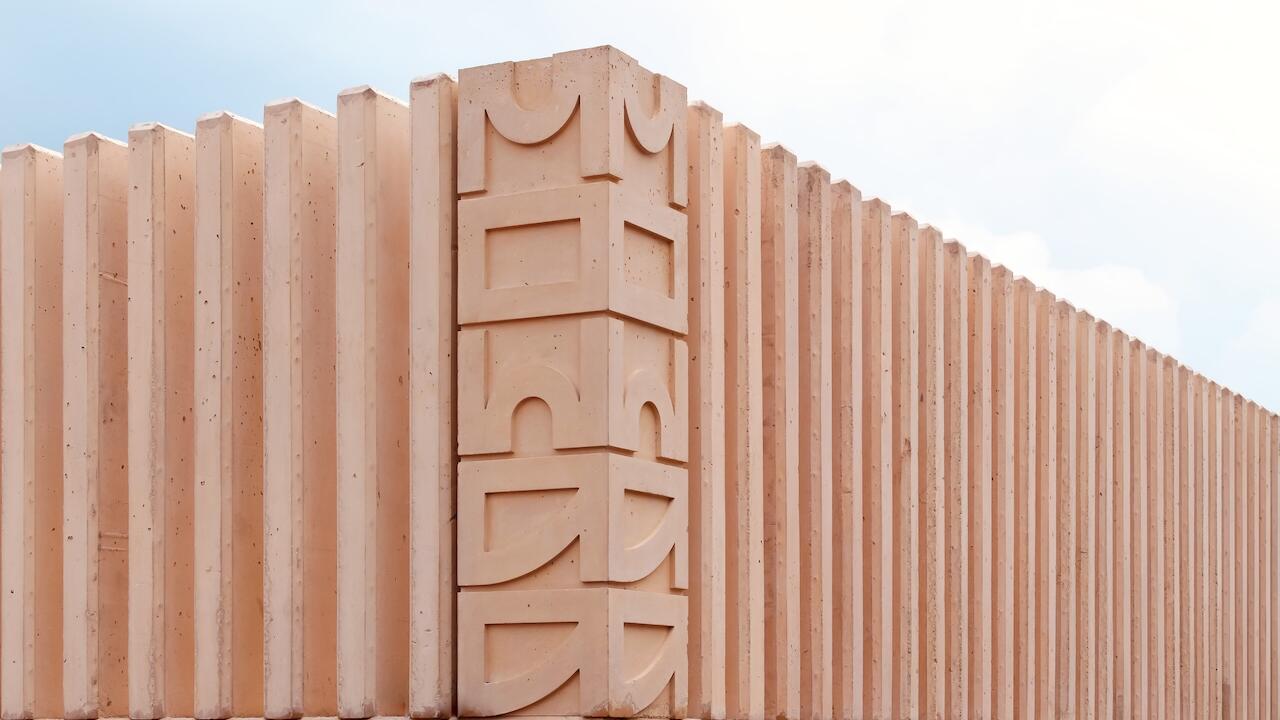Anne Imhof
Deborah Schamoni
Deborah Schamoni

‘At this site what colour has fever?’ ask the actors in Rage I (2014), the performance that forms the heart of Anne Imhof’s exhibition at Galerie Deborah Schamoni. Seven performers recite this line – and others such as ‘lower the horizon, all the horizons’ and ‘if this is the situation / everybody is beautiful’ – in a loop, breaking the phrase down into single syllables and voicing the words and sentence fragments individually or as a chorus. Accompanying these looped vocals are minimally choreographed sequences of gestures, facial expressions and movements. The piece’s sometimes overlapping, sometimes alternating, spoken fragments yield a highly rhythmic acoustic ebb and flow. The choreography parallels this tonal dynamic: the performers interact, approaching each other while voicing their syllables, as if they were trying to join the phrases together. Movements appear as reactions: when one group of performers squats the other is compelled to stand up and vice versa, as if the two groups were attached by an invisible rope. This torturous alternation of give and take, attraction and repulsion, goes on for more than two hours as the figures continually evade contact.
This balancing act, a search for equilibrium, is one of the main motifs of Rage I. It crops up again at other points in Imhof’s exhibition, such as the installation Seesaw (2014), in which two seesaws, each made of a painted plank of wood, are balanced on a slab of alabaster – one tilted to the left, the other to the right. It is also apparent in the sculpture Unten, Unten, Unten, Hollow Whale (2014), a rectangular concrete tub placed in the gallery’s garden. The main part of the structure is filled almost to the brim with buttermilk, with the tip of a clay tongue sticking out. Open buttermilk containers sit in the smaller part of it, and a tube connects the two sides as if the milk had been pumped through it. In Fountain (2014), located inside the gallery, an outline on the floor takes the place of the concrete tub, and the buttermilk containers are filled with written-on crumpled-up paper. The clay tongue rests on a small black pedestal, its raw materiality contrasting with the DIY set-up just as it does in the other work. Both pieces can be interpreted as allegories of supply and demand. The tongue appears again in the form of alabaster sculptures, for example in Tongue (2014). Other components echo throughout the show: the letters of the phrase ‘O hole’ – repeated hypnotically in the performers’ script – reappear in Imhof’s drawings, for example in O hole (2014), on the large hanging cloth that serves as a sort of score for the performance (For Cabinet, for Rage, 2014), as well as on the wood planks of Seesaw.
The narrative that emerges in the show – not only through performance as a rigorously conceived language game, but also in the repeated concepts through a variety of production strategies – is decidedly nonlinear and cyclical. Ranging from visual language to body language to lyrical language and back again, the performance and the exhibition appear as a poem in motion. In a text on Rage I, Imhof writes that the challenge of the work was not to improve language or thought, but rather to think at all – to ‘think the unthinkable’. From this perspective, the exhibition offers insight into an unfamiliar mind in conversation with itself: here, communication is a dependent relationship. Thinking stagnates in a schizophrenic soliloquy – and conversation with others is reduced to an economy of import and export.
Translated by Jane Yager













